
views
Protecting Yourself

Keep your guard up. In order to execute a flying sidekick, you need to learn to protect yourself from your opponent’s attacks while you wait for an opportunity to use it. Raise both fists to just below eye level to place them in position to both block strikes as well as to execute offensive movements. Keep your rear elbow tight to the body without touching it. It will protect your solar plexus and ribs. Your lead arm should be slightly in front of you. This serves to protect your solar plexus and ribs, but also positioned to quickly interfere with strikes coming toward your face as well as to jab. Keep your chin down to protect your nose and eyes from strikes that get past your defense.
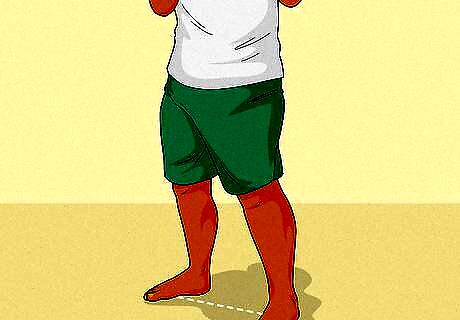
Stagger your feet. Keep your feet about shoulder width apart with your non-dominant foot forward. Keep your weight balanced between both feet. Angle both feet slightly in the same direction (slightly off from direct center). Your rear heel should be elevated slightly to move quickly for striking or pivoting.
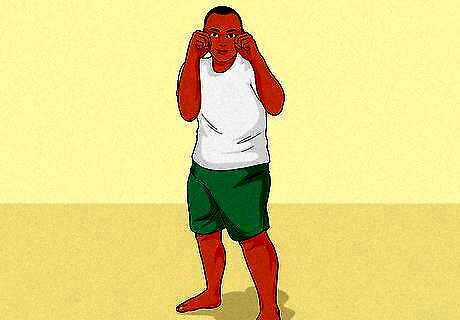
Get comfortable in a defensive stance. In order to execute a flying sidekick, you’ll need to be able to protect yourself until given the opportunity. Spend enough time in your fighting stance that your body comfortably returns to it after each move or technique you execute. Keep your guard up at all times to avoid counter strikes. Avoid lowering your arms to maintain balance.
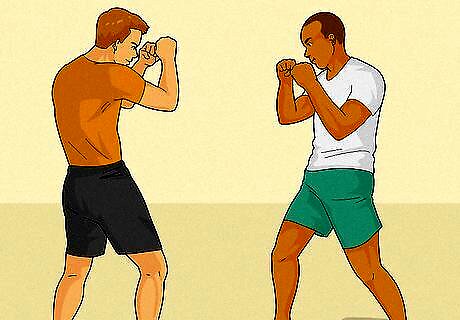
Protect yourself while moving. Keep your guard up at all times, particularly while moving toward and away from your opponent. Take 12–15 in (30–38 cm) steps with your hands up in a protective guard. Only move one foot at a time to ensure you maintain balance even under striking. Always complete your movements oriented toward your opponent.
Executing a Flying Sidekick
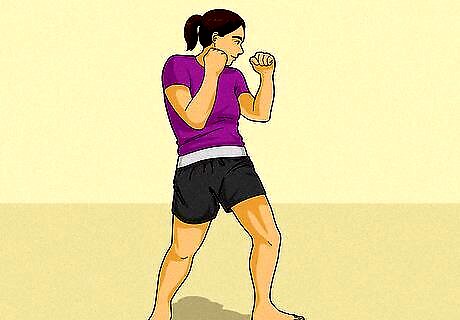
Start in a defensive stance. As is the case with all martial arts movements, protecting yourself is paramount in order to effectively execute the technique. Be careful not to lower your guard while you execute the kick. It is not uncommon for people to use their arms to aid in balance, but that can open you up to counter strikes. Do not alter your stance or movements as you prepare to execute a flying sidekick. You could tip your opponent off about your intent, which is commonly called, “telegraphing.”
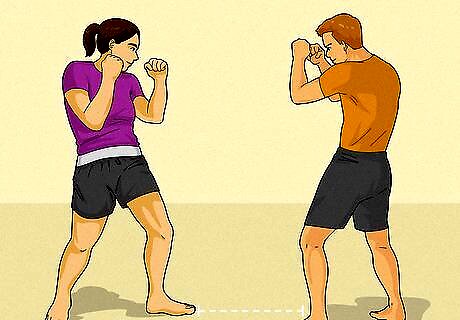
Orient yourself to your opponent. In order to properly execute a flying sidekick, you need to be in the correct position versus your opponent. Angle your body so your opponent is ahead of you. Create a few feet of distance by backing up or striking your opponent with a front kick just above the knee to force them to retreat.
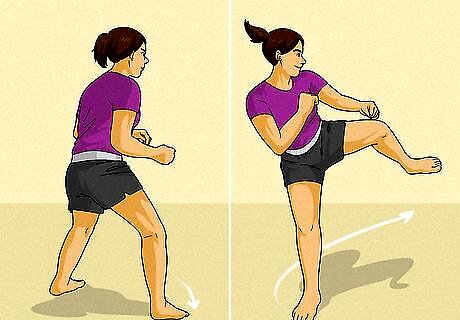
Jump to bring your feet into position. A jumping sidekick requires that you leave the ground. There are two variations in how to execute this portion of the technique separated by which foot you jump with. From your defensive stance, jump up and toward your opponent. The differentiation between techniques involves jumping with either your lead or rear foot, so neither is technically incorrect. Decide which foot to use to lead your jump based on your comfort and the situation. Retract your legs into your body to protect yourself and prepare to execute the kick.
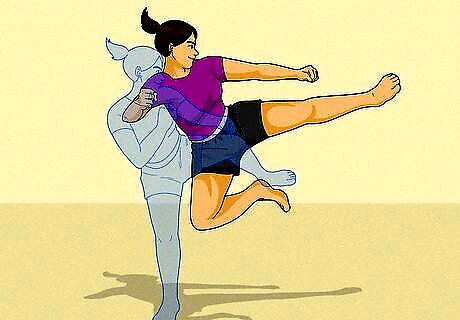
Extend your striking foot into your opponent. Once airborne, execute the kick as your jump closes the gap between you and your opponent. The striking surface for this technique should be the leading cutting edge of your foot, but using the ball or heel of the same foot should not result in injuring you. Never attempt to make contact with your opponent higher than their chest. Heads move quickly and are difficult targets and over extending could reduce your ability to regain your balance as you land.
Returning to a Defensive Stance
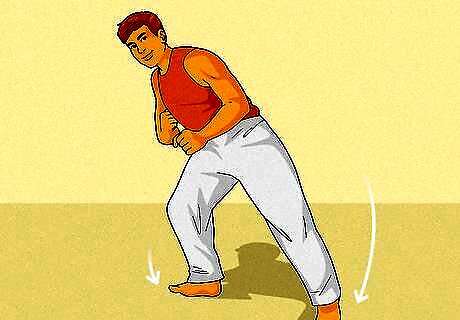
Land after connecting with your opponent. After striking your opponent, quickly get back into position to protect yourself. Lower your rear (non-striking) leg immediately after making contact with your opponent. Immediately retract your extended leg and plant it firmly on the ground in your traditional defensive stance. Ensure your guard is still up to protect yourself from counter strikes.
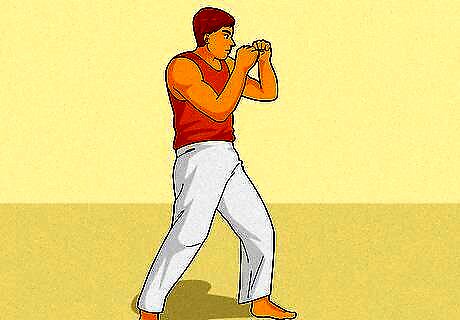
Land after missing your opponent. If you fail to connect with your opponent, it is extremely important that you regain your balance quickly and enter into a defensive stance. Lower your non-striking leg as soon as you recognize that your kick did not connect. Plant both feet firmly and ensure your guard is up to protect your face and torso from any incoming strikes. Create distance between you and your opponent by backing away or executing another series of strikes while increasing the gap between you.
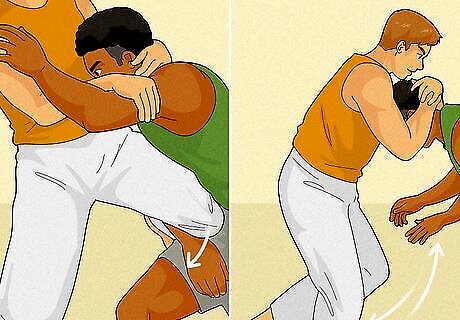
Defend yourself if your opponent grabs your leg. If you fail to land the kick, you run the risk of your opponent catching your leg. This puts you at serious risk for further strikes or a single-leg takedown. Immediately drop your weight onto your opponent’s thigh. This may break his or her grip and will prevent your opponent from kneeing you. Get control of your opponent’s free arm with your outside hand to assert dominance, and use the arm on the same side as your caught leg to grab the back of his or her head. Press into your caught leg while maintaining control of your opponent’s head until his or her grip is broken. Return to a defensive stance to protect yourself once your leg is free.



















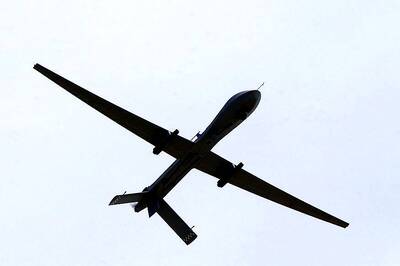
Comments
0 comment